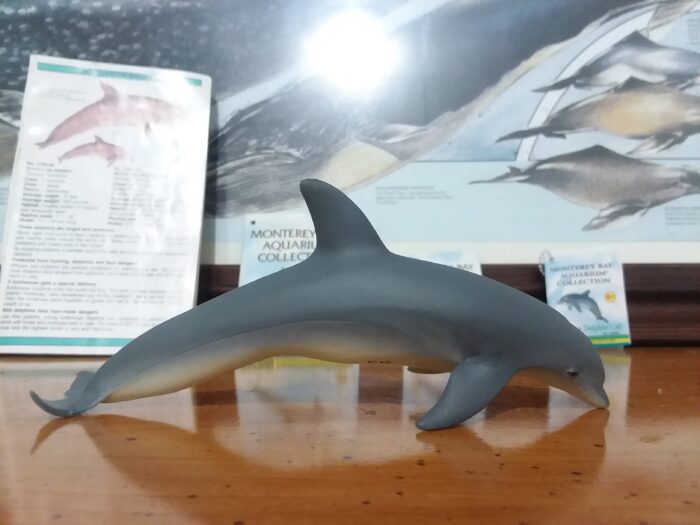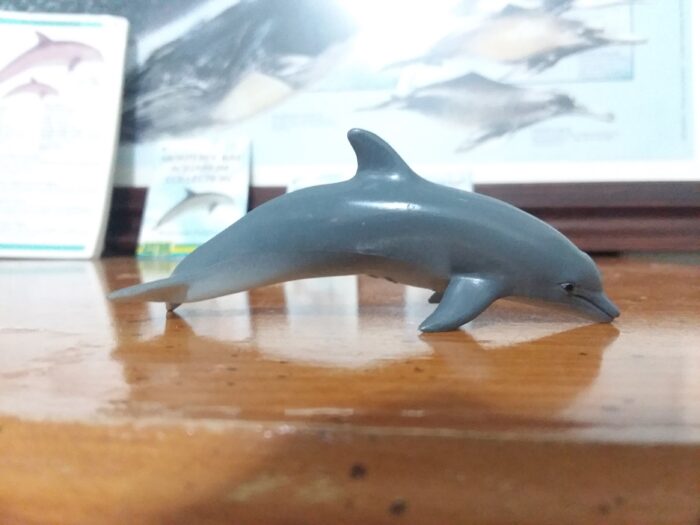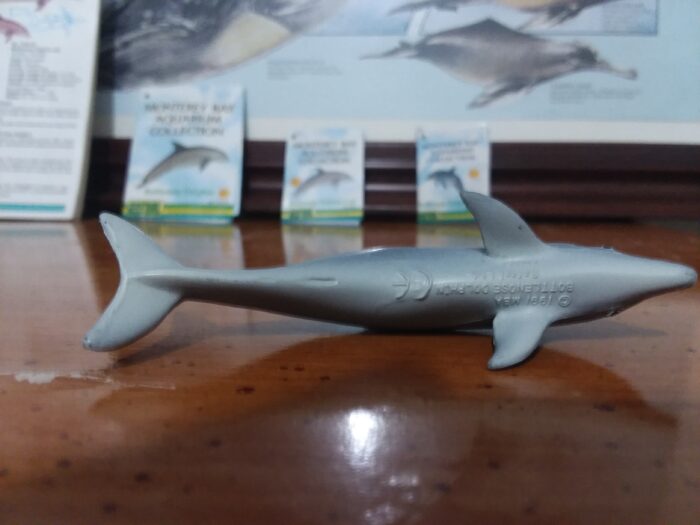A creature that needs no introduction, the common bottlenose dolphin (Tursiops truncatus). The common bottlenose dolphin is a very widely-distributed species, covering the temperate and tropical waters of the world. With the species-level taxonomy still in revision, the Indo-pacific bottlenose dolphin (T. aduncus) was split from T.truncatus in 2000 and 3 subspecies are currently recognized: the common subspecies (T.t.truncatus) Lahille’s (T.t.gephyreus), Black sea bottlenose dolphins (T.t.ponticus). There is significant size variation between populations, with adults ranging from 1.8-3.9m in length and 136-635kg in weight. Males are slightly larger than females. This species historically gained a significant amount of popularity due to their ubiquity in marine parks. While the media traditionally portrayed bottlenose dolphins as benevolent, the startling aggressive behavior exhibited by certain populations has caused the budding of a more nuanced look at this species. Nonetheless, bottlenose dolphins, between their social organization and intelligent behavior, have been shown to be very fascinating animals. The species is labeled as ‘Least Concern’ by the IUCN, however certain local populations, like in New Zealand, are considered ‘Critically Endangered’. Bottlenose dolphins are generalist predators, feeding on a wide variety of fish and invertebrates. Predators include large sharks and killer whales.

The 30th anniversary of Safari Ltd.’s Monterey Bay Aquarium Collection may prove to be the last year these figures will be covered on the blog, as we’re dwindling down to the remaining 5 species. The bottlenose dolphin, like the recently-reviewed hammerhead shark, is among the original 14 to be released in 1992. 30 years later, we’ll now assess where this figure ranks among the plethora of bottlenose dolphin figures in the market.

The bottlenose dolphin adult is about 15.5cm long, which places it in the 1:12-1:25 scale range for a typical adult. At the marketed scale of 1:20, it corresponds to a 3.1 meter individual. The sculpt seems to be generally impressive. The main thing that sticks out to me is just how lean the body is compared to many other figures. I think it would have suited better for the stomach area to be more plump. Besides that, the body still appears quite convincing and nice.

Like on the other cetacean figures, the ventral anatomy is quite detailed. The navel, genital slit, and mammary slits are all present on this female.

As for the paintjob, more work is done to properly show how misleadingly intricate the bottlenose dolphin’s coloration is. A medium gray on the dorsal side of the figure forms a gradient to a darker shade around the flanks before countershading leads to a cream-color for the ventral body. A very appropriate choice given the amount of variation that exists between bottlenose dolphins across the world. However, the matte finish on this remaster isn’t my preferred choice, so I will also show the previous editions.

Here’s the original figure. I actually prefer the sculpt as it’s not as emaciated as the current figure and the glossy finish more properly captures the luster of dolphin skin. However, the eyes are far less realistic, which is evocative of the narwhal and whale shark.

Here is the version of the MBA bottlenose dolphin that was sold until the remaster was released around 2016. I personally consider this the definitive version of the MBA bottlenose. Here you get the best of both worlds with the glossy finish and thicker body while also having realistic eyes. I would say the bottlenose dolphin is the only figure in this collection where I would actively advise interested buyers to purchase an older version off of the secondhand market over the current release.

Now we have the calf. At 8cm, it corresponds to a 1.6m calf at the 1:20 scale. I own two versions of the calf: one that corresponds to the original’s paintjob and this one that is paired with the pre-remastered adult. The calf looks perfectly fine in terms of sculpt and paintjob.

A genital slit is also present on the ventral side. I’m unsure if it’s appropriate to identify the sex of figures as calves as it’s possible the mammary slits aren’t developed in female calves. Overall, the calf is very detailed.

I’ll be frank, it’s super easy to be blasé about bottlenose dolphin figures. You can’t go two feet without tripping over one, they’re no better than killer whale figures. Within those constraints, the MBA collection still deserves credit for how they handled this dolphin, even if I think they took a step back in its remaster. The current edition is perfectly fine as-is, but I would sooner advise locating the pre-2016 version. It’s not hard to find on the secondhand market. The bottlenose dolphin calf has been long retired like the others. Luckily it’s somewhat easier to find than some of the more elusive species of this series.
Disclaimer: links to Ebay and Amazon on the AnimalToyBlog are affiliate links, so we make a small commission if you use them. Thanks for supporting us!




It is always enjoyable learning more about cetaceans from your reviews.